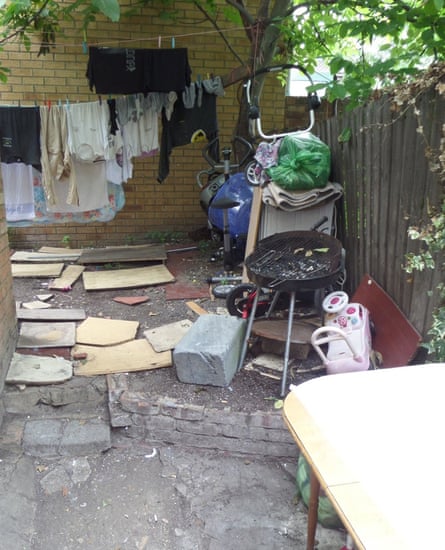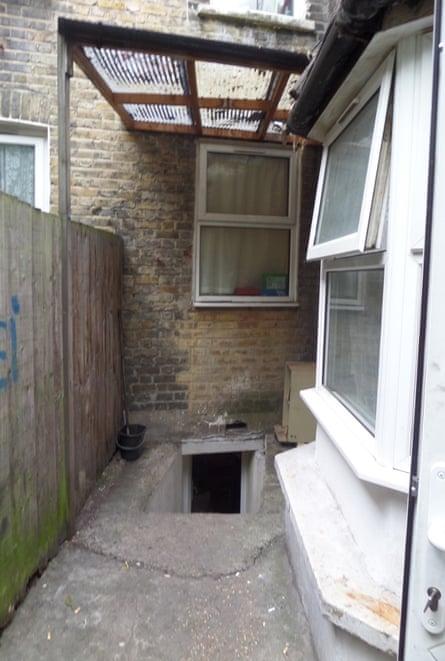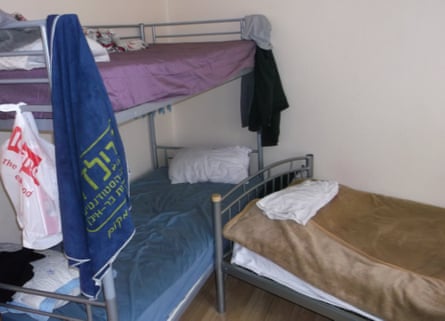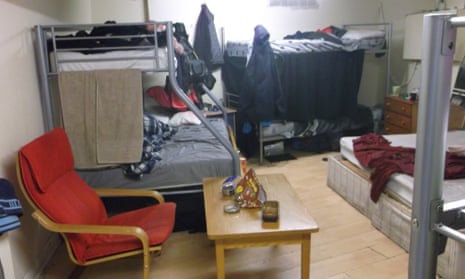Housing enforcement officers have discovered 26 people living in a three-bedroom family home in east London in what authorities are calling one the most extreme examples of illegal overcrowding uncovered in recent years.
The home, which was officially licensed for a family unit of up to seven people, was found to house 25 adults and a child, from three or four different families.
At least seven tenants were found to be living in the cellar of the property, which was accessible only via steep concrete steps from the back garden. The cellar was windowless, had its ventilation duct taped over and the internal door to the house was locked.
As well as overcrowding, officials are also investigating a series of building and electrical hazards, a broken toilet and broken furniture, as well as several breaches of licensing conditions.

Illegal overcrowding is a growing problem in the capital, fuelled by a shortage of affordable housing, high rents, migration and spiralling house prices.
Newham council, which carried out the raid as part of an ongoing campaign against rogue landlords, said the scale of the overcrowding found at the property was “the biggest we have seen in a while”.
The council says it intends to prosecute the landlord, on whom it had previously served an enforcement order three years ago for a breach of planning permission.
According to the council, tenants at the East Ham property claimed they were paying varying rates of rent, collectively amounting to at least £2,340 a month. A family of three living in the ground floor front room paid £180 a week, while the occupants of the basement were paying £20 a week each.
The tenants will not be required to leave the property immediately, although it is likely they will be made homeless after the landlord responds to council demands.
The east London borough has the highest level of overcrowding in the UK, according to research by the housing charity Shelter. About 50% of private rented stock is overcrowded, meaning that tenants breach official room standards guidelines. Around a quarter of the borough’s 100,000 households live in a property that is too small for them.
The problem of chronic overcrowding, often in homes illegally occupied by multiple tenants, appears to be on the increase across much of London.
Ben Reeve-Lewis, a local authority housing enforcement officer, told the Guardian he had recently raided a two-bedroom flat in south London in which 22 people were living. Raids were a regular occurrence and it was not unusual to find 20 people in a three-bedroom home.
Tenants were typically low-paid migrant workers or students, or trafficked foreign nationals put to work in the “hidden” economies of drugs or prostitution, he said.
“What I put it down to is London rents are so off the scale that people will live anywhere just to be able to afford to stay here. They might typically pay rent of just £200 a month. But the fact there are 15 of them in the house means the landlord is coining it.
“Last year we prosecuted a landlord who had 47 people in a property meant to house nine.”
The Newham mayor, Sir Robin Wales, said this week that his borough was “on the front line of the housing crisis”. About 40% of its housing stock was privately rented and tenants were subject to soaring rents and often dire conditions.
About15,000 residents are on the borough’s social housing waiting list, while more than a quarter of council homes sold under right to buy have ended up in the hands of private landlords.

Wales told the Chartered Institute of Housing conference this week: “The choice for many of my residents is stark: succumb to rogue landlords – who have no qualms about packing five people to a room and renting out homes without roofs – or leave London altogether, abandoning it to the wealthy and asset-hoarders, leaving our public services without the nurses and teachers we need.”
The East Ham property had previously been subject to a council enforcement order in 2012, when the same landlord breached planning permission by converting it into a house of multiple occupation (HMO). A follow-up inspection a year later found it was back in legal use as a single family home.
However, a spate of recent complaints from neighbours about loud music and rubbish dumped in the gardens of the property triggered a raid on Friday 19 June.
Planning and housing enforcement officers visited the house at 11am and found a number of tenants on site, including a couple and their young daughter who lived in the ground floor front room.
The council has written to the landlord formally, asking her to reply to the issues raised and make adequate arrangements to improve the state of the property.
Housing law expert Giles Peaker of Anthony Gold solicitors said that statutory overcrowing was a criminal offence under the 1985 Housing Act and the landlord could be prosecuted if it is demonstrated she had caused or permitted the house to become overcrowded.
By chance, Friday’s raid was witnessed by the cabinet secretary and head of the civil service, Sir Jeremy Heywood, who was on an official fact-finding mission to Newham. A council source said that although officers suspected an overcrowding problem before the visit they “didn’t expect it to be this big”.
The raid comes as Newham, which was the first council in England to introduce a licensing system for private landlords two years ago, finds itself at loggerheads with the government’s new central powers, introduced in April, which allow ministers to prevent local authorities from regulating local landlords.

Newham introduced its licensing scheme in the wake of a series of so-called “beds-in-sheds” scandals, in which tenants were found living in poor conditions in sheds, garages and outhouses.
Newham has to reapply for permission to renew its pioneering licensing scheme in 2017. About 35,000 private rental properties in the borough are licensed. So far, the council has banned 25 landlords, prosecuted 439 and recouped hundreds of thousands of pounds in fines and unpaid council tax.
Wales said earlier this year: “Good landlords have nothing to fear from private rented sector licensing. Our focus has always been ensuring tenants are living in safe conditions that they are secure in their legal rights and the borough’s streets are not blighted with antisocial behaviour.”
- This article was amended on 25 June 2015 to correct the number of landlords banned by Newham, and to clarify that the homeowner of the East Ham property is a woman.

Comments (…)
Sign in or create your Guardian account to join the discussion